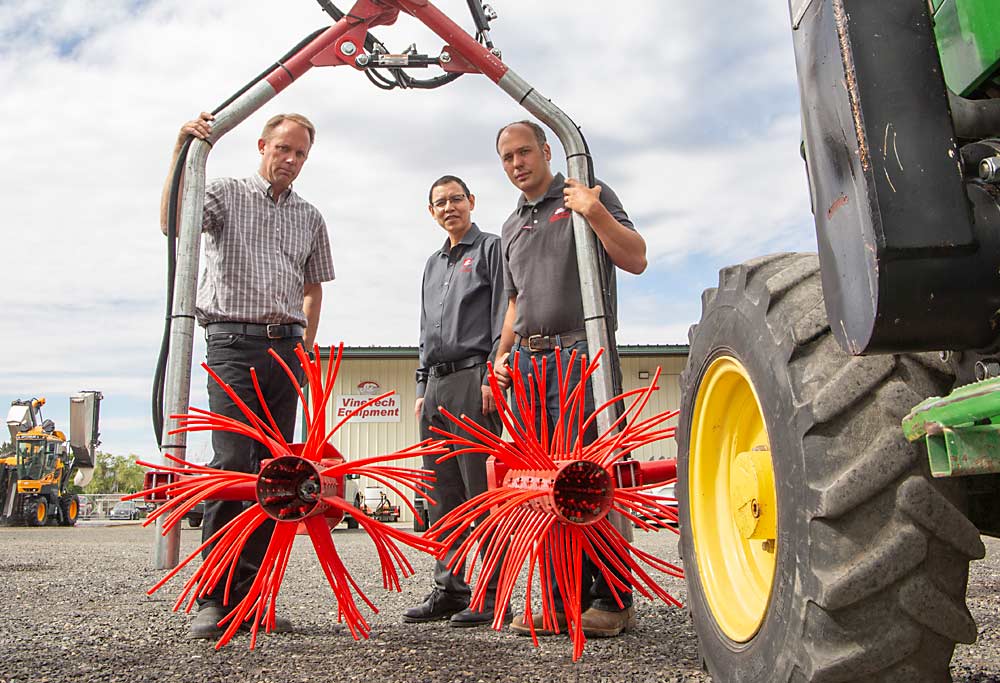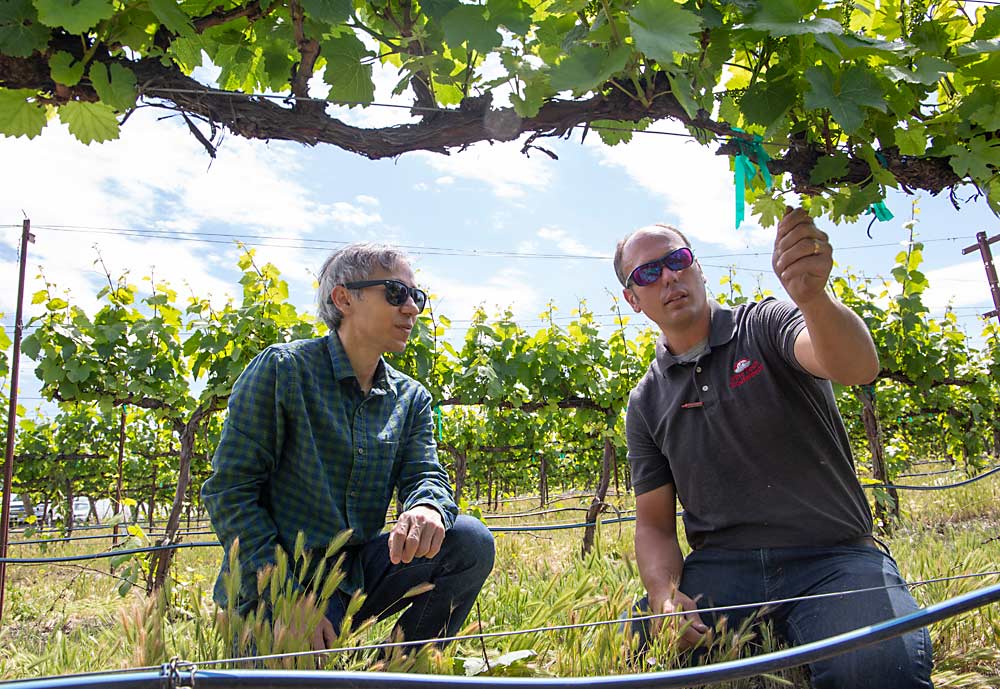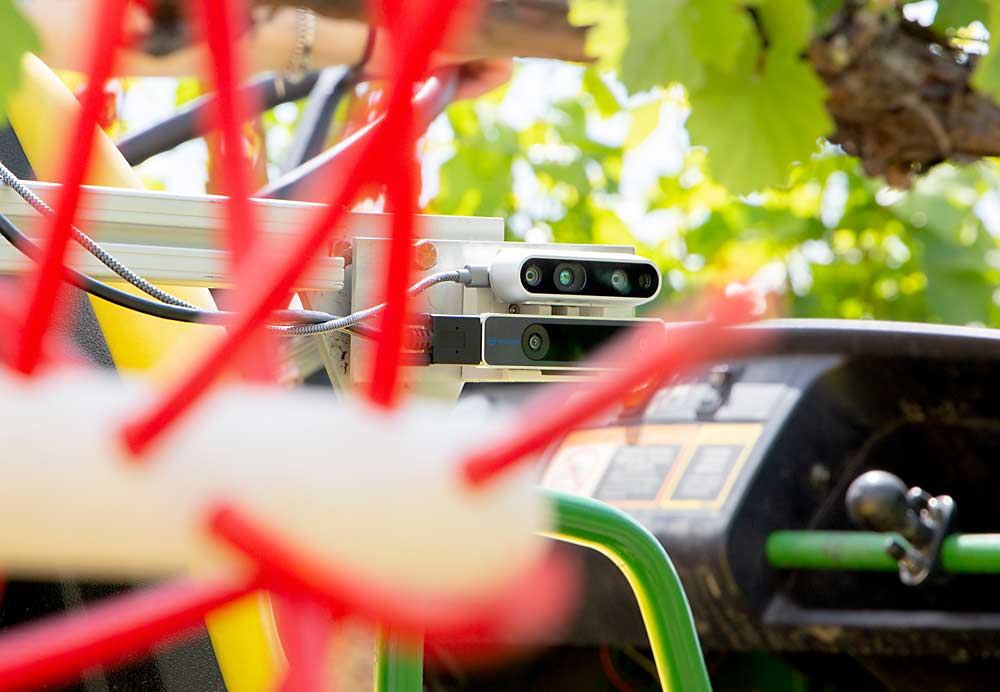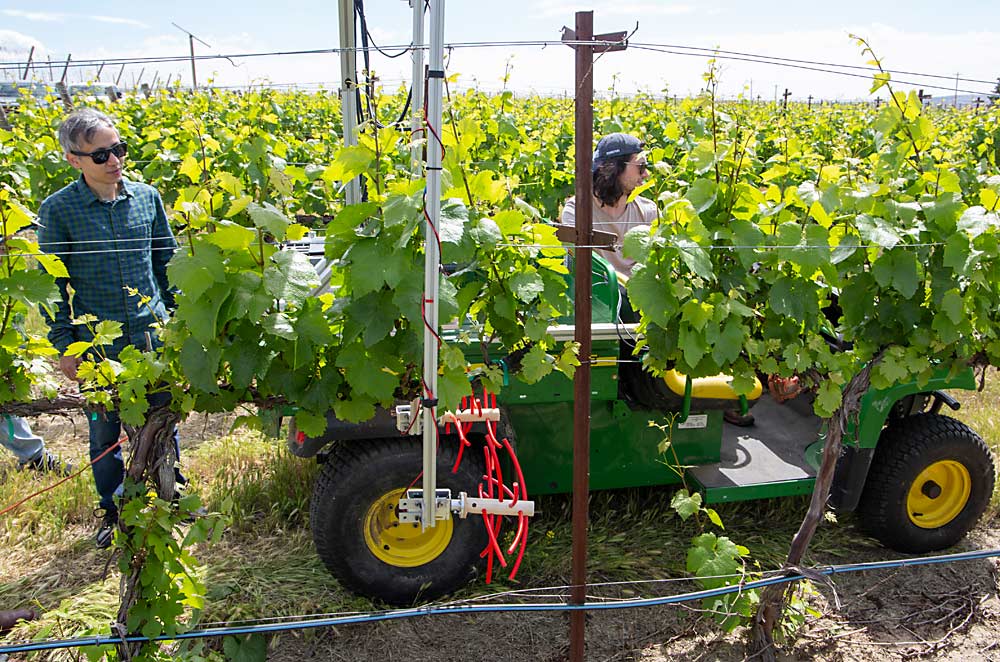
The Washington wine industry is working with researchers and private industry to make a game-changing vineyard technology a reality. It’s taken Washington State Wine Commission-supported researchers three years to develop a precise mechanical solution for vineyard shoot thinning. Once implemented, this new automated technology has the potential to save growers about $250 per acre by increasing the confidence that mechanical shoot thinning will be done precisely and consistently.
A potential roadblock of agricultural research is getting the research outcome into the hands of users for adoption. The Washington State Wine Commission is working to overcome this hurdle by funding the integration of new research technology with commercially available equipment. This step is often underfunded because it’s not the traditional research that leads to articles in scientific journals. But in this case, it will bring an automated, precision mechanical shoot thinner to the Washington wine industry as engineers and scientists from Washington State University collaborate with Vine Tech Equipment of Prosser, Washington.
The research to develop a precise mechanical solution for vineyard shoot thinning is led by WSU’s Qin Zhang, director of the university’s Center for Precision and Automated Agricultural Systems, and Manoj Karkee, biological systems engineer and a roboticist for CPAAS. Safal Kshetri, WSU postdoctoral researcher, is working on the technology integration. The project began three years ago and received funding from the wine commission and the Washington State Department of Agriculture’s Specialty Crop Block Grant program.

From mechanization to automation
Growers have a wide variety of implements and equipment available for wine grape production, and nearly all vineyard tasks have been mechanized. Although mechanical shoot thinning tools are commercially available, the approach has limitations and has not been widely adopted.
Shoot thinning is done in wine grape vineyards for a variety of reasons: improving the uniformity, spacing and direction of shoot growth; improving light penetration and air movement; and adjusting crop load by removing fruiting shoots or adjusting leaf-area-to-crop ratio. Shoots that are typically removed are those growing from the base of spurs, multiple shoots growing from the same node, shoots growing from nonspur positions or originating in the head region or on the trunk. Manual shoot removal is labor intensive, expensive and, in Washington, often needs to be done when there is high demand for workers in cherry and apple crops.
Mechanizing the task of shoot thinning has the potential to save growers about $250 per acre. However, the effectiveness of available mechanical shoot thinners is dependent on the skill of the operator. While driving the tractor down the vineyard row, the operator uses a joystick to follow the trajectory of the cordon and must constantly move the thinning heads up or down, in or out, with seconds to react. The thinning heads are cylindrical rollers with flexible plastic whips — like those used in weed whacking, but on steroids. Thinning aggressiveness is determined by tractor speed and the angle of the thinning head. Although commercial units are effective when used to remove suckers from the trunk, results for shoot thinning have been highly variable due to operator fatigue and human error.
Imaging system

The solution to the variability problem of shoot removal is to automate the height adjustment to precisely position the thinning heads. To accomplish this, Zhang, Karkee and their research team first developed a machine vision system of cameras, image analysis and deep-learning techniques to identify the location and trajectory of the cordon and trunk, as well as the density of the shoots along the cordon. Once the vision system could see and follow the cordon, pneumatic actuators were added to the prototype machine — for quick adjustment of roller height, orientation and speed — to precisely remove desired shoots based on input from the imaging system.
A proof-of-concept prototype was built by the research team and mounted on a utility vehicle. The prototype sees the canopy and tracks the height and width of the cordon and shoots to automate the shoot thinning. WSU is now beefing up that system to allow the prototype continuous viewing of the canopy and improve the data processing speed.
Collaboration
The last phase — and where the wine commission has stepped in — is to support the integration of the research technology with a commercial unit. This step is often where new technology falls into a black hole as it waits to find a suitor interested in commercialization. By supporting this integration, we can help bring the research over the finish line and into the hands of growers.

The commission is fortunate to have a willing commercial partner in Vine Tech, which was involved with the WSU project from the start. This early collaboration and communication helped ensure that the research team was well-grounded on the needs of growers and had a focus on commercialization. Vine Tech is currently working on a fast track to integrate data from the WSU prototype and marry it to a mechanical shoot thinner already available. Vine Tech also plans to make changes to the prototype, such as using hydraulics instead of pneumatics because pneumatic systems can be erratic in their operation.
The biggest design change by Vine Tech will be development of a two-row precision shoot-thinning machine. This will make the shoot thinner more efficient and affordable for large and small vineyards. A two-row mechanical shoot thinner would be near impossible without automating the thinning head movement. Vine Tech is working to have a two-row commercial unit ready by 2023, which will be a game-changer for Washington’s wine industry. •
—by Melissa Hansen






Leave A Comment